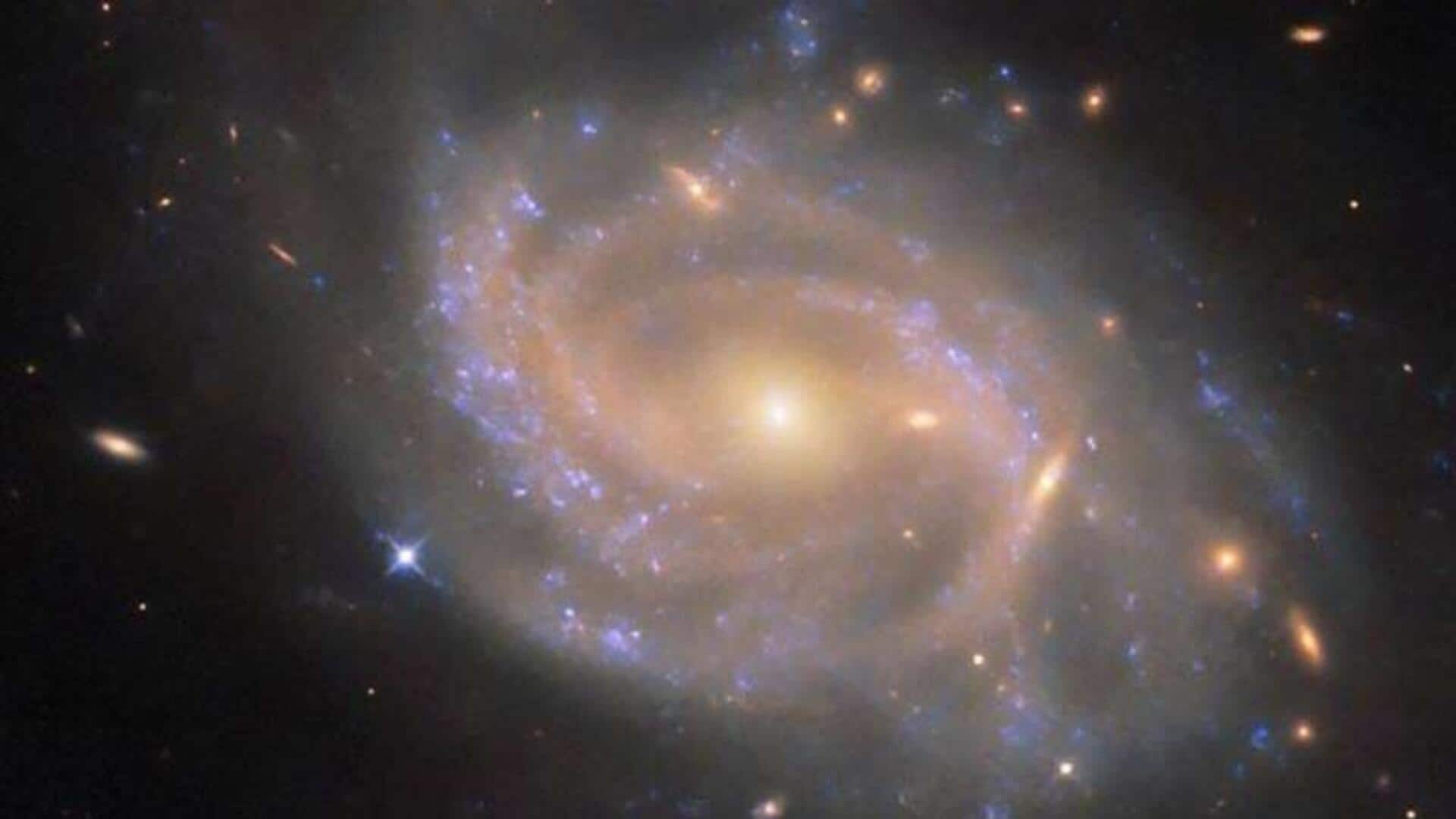
Watch: Hubble snaps a spiral galaxy 137M light-years away
What's the story
NASA's Hubble Space Telescope has captured a stunning image of the spiral galaxy NGC 3285B. The galaxy is located in the constellation Hydra, some 137 million light-years away from Earth. Hydra is the largest and longest constellation in our night sky, covering an area equivalent to almost 200 full Moons placed side by side.
Galactic community
NGC 3285B is part of Hydra I cluster
NGC 3285B is part of the Hydra I cluster, one of the largest galaxy clusters in our cosmic neighborhood. These clusters are massive groups of hundreds to thousands of galaxies held together by gravity. The Hydra I cluster is dominated by two giant elliptical galaxies at its core, each about 150,000 light-years across—roughly 50% larger than our own Milky Way.
Cosmic explosion
Galaxy hosted a Type Ia supernova in 2023
Unlike its giant neighbors, NGC 3285B is located on the outskirts of the Hydra I cluster. The galaxy drew Hubble's attention because it hosted a Type Ia supernova in 2023. These cosmic explosions occur when a white dwarf—a type of compact stellar remnant—explodes, triggering a runaway nuclear fusion reaction that briefly outshines an entire galaxy. The supernova SN 2023xqm can be seen as a bluish dot on the left edge of NGC 3285B's disk in Hubble's image.
Goals
How will the observation help researchers?
Hubble observed NGC 3285B as part of a program targeting 100 Type Ia supernovae. The goal is to observe these supernovae in ultraviolet, optical, as well as near-infrared light. This will help the researchers disentangle the effects of distance and dust, which can make a supernova look redder than it actually is.